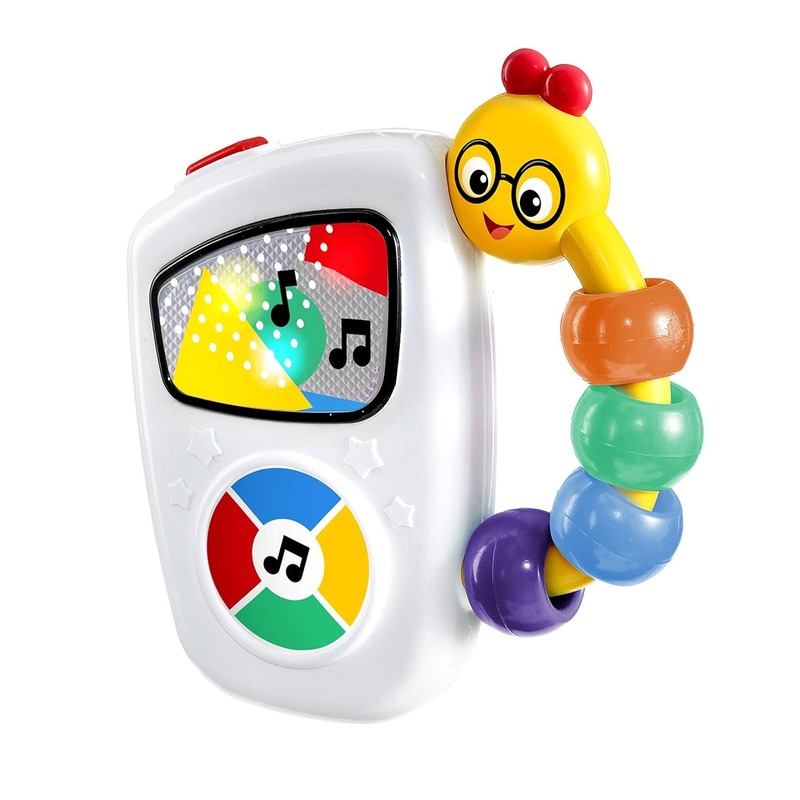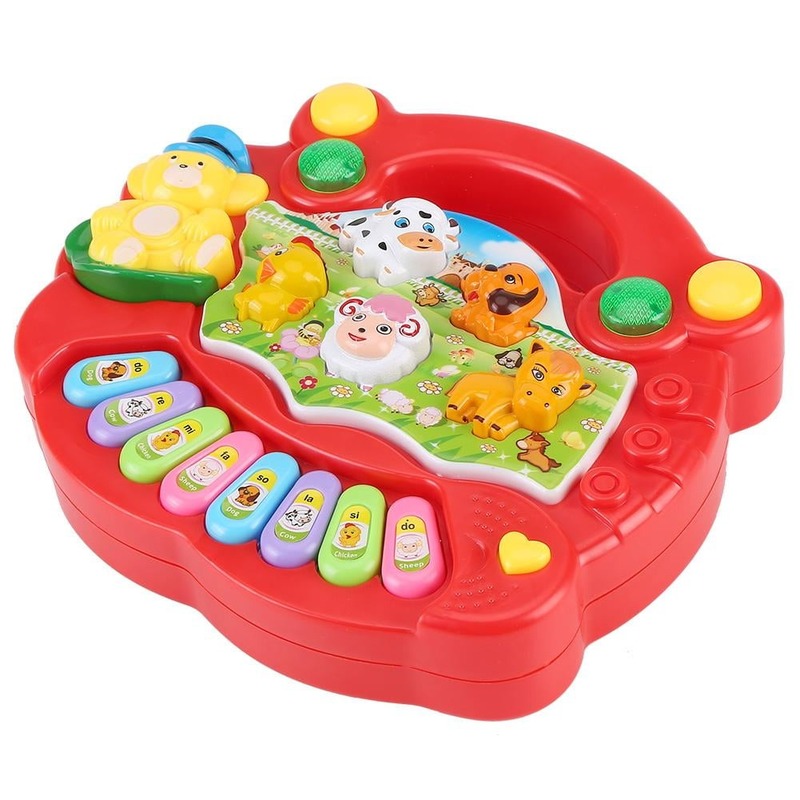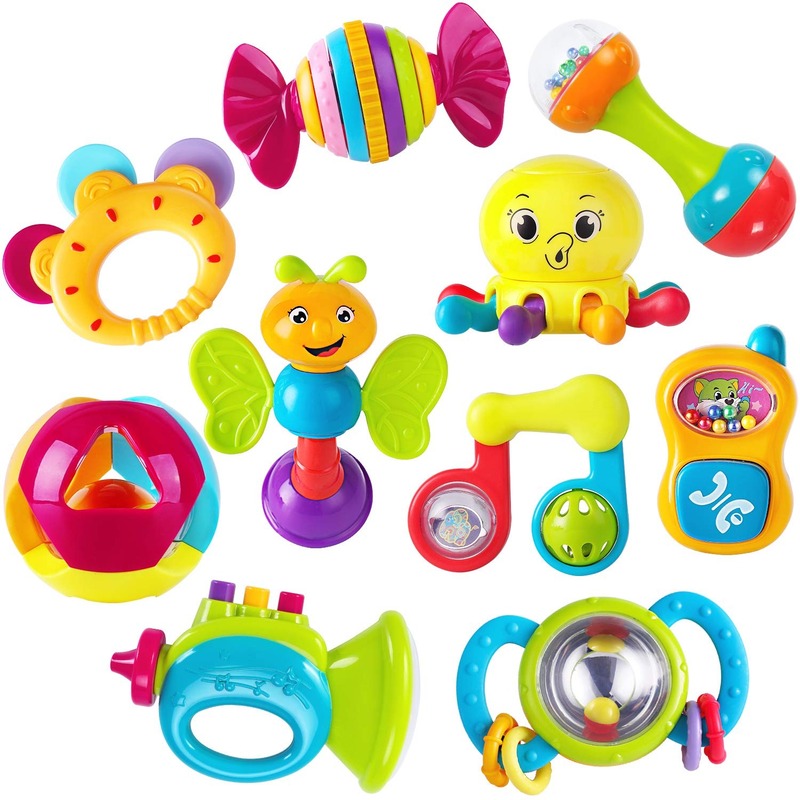Importance of Music for Baby’s Growth and Development
The influence of music on a child’s development is remarkable and far-reaching. It stimulates the brain, enhancing cognitive skills and sensory development. For babies, Musical toys for babies can play a vital role in this process.
Music encourages babies to explore their vocal sounds and develops their listening skills. With musical toys for babies, infants learn to detect different sounds and rhythms. This ability can support language development and auditory processing.
Further, interacting with music can help babies coordinate their movements. They learn cause and effect as they realize that their actions can produce pleasant sounds. This interaction contributes to their motor skill development.
Emotionally, music is a powerful tool. It can soothe a fussy baby and bring joy to their daily routine. During the early months, the emotional bond with caregivers is crucial. Musical toys for babies often become part of special bonding moments, full of smiles and giggles.
Babies also grasp the concept of rhythm through music, which can translate to better timing and sequence learning in other areas of development. Moreover, the repetition common in many children’s music can reinforce memory skills and pattern recognition.
Engaging with musical toys encourages creativity and can help in fostering an early appreciation for music. This sets a foundation for future musical interests and talents.
Incorporating music into a baby’s life through musical toys is not just fun. It is a strategic move to aid their overall growth and development. It’s a delightful way to enrich their world while supporting the emergence of a range of skills that will benefit them as they grow. Musical toys for babies are, without doubt, influential tools in nurturing a child’s developmental journey.

Top Recommended Musical Toys for Infants
Selecting the right musical toys for babies can be a joyous task. To help parents and caregivers, here are the top recommended musical toys that will not only entertain infants but also support their developmental milestones.
- Xylophones for Babies: They are colorful and easy to play. Babies can strike the keys to produce different sounds, which helps in their auditory development.
- Drum Sets: Soft and baby-friendly drum sets encourage babies to explore cause and effect. They can tap to their heart’s content, enhancing their motor skills.
- Rattles with Music: These come in various shapes and can produce gentle music. The shaking motion helps with grip and arm coordination.
- Musical Plush Toys: Soft toys that play lullabies or nursery rhymes are perfect for calming babies and aiding in sensory development.
- Musical Activity Centers: These toys have multiple buttons and parts to press, twist, and turn. They’re great for babies learning to manipulate objects with their hands.
- Dance Mats: For babies who can sit or stand, dance mats provide a surface that plays music when touched. They’re excellent for promoting movement and balance.
Every toy on this list has been chosen for its ability to provide interactive experiences that fine-tune a baby’s growing capabilities. While choosing musical toys for babies, always consider their age and developmental stage to ensure it’s a perfect fit for them.
Age-Appropriate Musical Toys for Different Stages
As babies grow, their needs change. It’s essential to provide musical toys that are suitable for their specific developmental stage. Here’s a breakdown of age-appropriate musical toys for babies at different stages.
- 0-3 Months: At this stage, babies are developing their sense of hearing. Soft musical toys, like plush toys with gentle lullabies, are ideal. They can help in auditory development without being too overwhelming.
- 3-6 Months: Babies begin to grasp and hold objects. Rattles with music and colorful teething toys with soft sounds are great for encouraging sensory exploration and fine motor skills.
- 6-9 Months: As babies become more active, they enjoy toys that respond to their actions. Musical toys that light up when touched, such as piano mats or touch-activated drums, keep them engaged and support cause-and-effect learning.
- 9-12 Months: Babies at this stage may start to stand or take their first steps. Push-and-pull toys with musical features can motivate movement and balance.
- 1 Year and Up: Toddlers can handle more complex toys. Toy instruments like xylophones or small drum sets let them experiment with creating their own music, enhancing cognitive and motor skills.
Selecting musical toys for babies that match their age and ability encourages safe play and optimal development. Check for a toy’s recommended age before purchasing to ensure it’s suitable for your baby’s stage.
Safety Tips for Choosing Musical Toys
When selecting musical toys for babies, safety should always be the highest priority. Here are several safety tips to keep in mind:
- Check for Small Parts: Toys with small parts can be a choking hazard for infants. Ensure all components are large and securely attached.
- Look for Non-toxic Materials: Babies often put toys in their mouths, so it’s crucial that the toy is made from non-toxic materials.
- Inspect for Sharp Edges: Toys should have smooth edges. Examine for any sharp or rough spots that might hurt your baby.
- Volume Control: Some musical toys can be loud. Choose ones with adjustable volume to protect your baby’s hearing.
- Durable Construction: Babies can be rough on toys. Pick ones that are sturdy and built to last.
- Age Recommendations: Always adhere to the manufacturer’s age recommendations to ensure the toy is appropriate for your baby’s developmental stage.
- Easy to Clean: Look for toys that are easy to sanitize, as babies will inevitably drool or spill on them.
- Battery Safety: If the toy requires batteries, the battery compartment should be secure and not easily accessible to babies.
By following these safety tips, you’ll be much more likely to choose musical toys for babies that are both fun and safe for your little one. Properly vetting toys before purchase will provide peace of mind and create a secure environment for your baby to explore music and its many benefits.

Benefits of Interactive Musical Toys
Interactive musical toys for babies offer a wealth of benefits that extend beyond mere entertainment. These engaging playthings are powerful tools for education and development. Here’s how they can make a positive impact on your child’s growth:
- Sensory Stimulation: Interactive toys engage multiple senses at once. They provide visual, auditory, and tactile feedback that stimulates a baby’s brain.
- Cognitive Development: These toys encourage problem-solving and understanding of cause and effect. Babies learn that pressing a button or touching a sensor produces sounds.
- Fine Motor Skills: Manipulating buttons, strings, or keys on musical toys helps develop hand-eye coordination and dexterity.
- Language Skills: Musical toys that include songs or spoken words can boost vocabulary and language comprehension in infants.
- Memory Enhancement: Repeating songs and rhythms helps improve memory. Babies begin to anticipate and remember different sequences of sounds.
- Emotional Growth: Music can express emotions that babies can feel but not yet verbalize. Recognizing and responding to these moods is a foundational social skill.
- Physical Development: Some musical toys encourage movement, such as chasing, bouncing, or dancing, which is excellent for physical growth.
- Independence: Playing with musical toys can foster independence as babies learn to operate toys on their own and make choices about their play.
By choosing the right interactive musical toys for babies, parents can ensure that playtime is also a time of learning and growth. Balancing fun with educational value is key to nurturing an all-rounded development in infancy.
How to Introduce Musical Toys to Your Baby
Introducing musical toys to your baby can be an exciting time for both of you. It opens up a world of sounds and experiences that can enhance their development. Here are simple strategies to make the most out of musical toys for babies:
- Start with Soft Music: Begin with toys that play soft, soothing tunes. This eases your baby into the experience without overwhelming them.
- Make It a Routine: Embed music into daily activities. Use musical toys during playtime, bath time, or relaxation to create a consistent exposure to music.
- Play Together: Engage with your baby by using the toy together. Show them how to press buttons or shake rattles. This interaction boosts learning and bonding.
- Encourage Exploration: Let your baby explore the toy on their own. This builds their curiosity and confidence.
- React to Their Cues: Observe your baby’s reactions to different sounds and toys. If they seem delighted by a particular toy, reinforce their interest by showing enthusiasm and incorporating it more into play.
- Use Descriptive Language: As you play with the toy, describe the sounds and actions. Say things like, ‘The drum goes boom’ or ‘Shake shake!’ This helps build their linguistic skills.
- Introduce Variety Gradually: Slowly introduce new musical toys to your baby’s collection. This keeps their interest alive and avoids any sensory overload.
Remember, the goal is to make music a fun and regular part of your baby’s life. By introducing musical toys for babies in a thoughtful and playful manner, you encourage a love for music and learning that can last a lifetime.
Enhancing Bonding Through Music and Play
Music not only fosters development in babies but also strengthens the bond between parent and child. The shared moments spent enjoying musical toys for babies can be some of the most cherished. Here are ways music and play can enhance the bonding experience:
- Regular Sing-Along Sessions: Often, musical toys have familiar tunes that both baby and parent can sing along to. Singing together can make for a memorable bonding ritual.
- Dance Together: Babies love movement, and gentle dancing with them in your arms to music from their toys can be a soothing and joyful activity.
- Musical Storytime: Pair music with storytelling by using toys that play tunes. You can create stories around the sounds, making storytime more engaging.
- Responsive Play: Respond to your baby’s cues when they interact with musical toys. If they smile or laugh when a certain note plays, repeat it and enjoy the interaction.
- Swapping Roles: Let your baby take charge and decide which toy to play with while you follow along. This encourages their independence while you support their choices.
- Touch and Explore Together: Explore the textures and features of musical toys with your baby, guiding their hands if needed. This can be a tactile learning experience for them, accompanied by your presence.
Remember, the goal is to create positive experiences associated with music and play. By doing so, you’re not only helping your baby develop but also forging a deeper emotional connection with them through shared enjoyment. These moments of interaction lay the groundwork for a strong, loving relationship, and musical toys for babies provide a perfect platform for them.

Care and Maintenance of Musical Toys
Taking care of musical toys for babies ensures their longevity and safety. Here are tips for proper care and maintenance:
- Clean Regularly: Wipe down musical toys often with a damp cloth. For washable items, follow the care label instructions.
- Check Battery Life: Replace batteries when needed to keep toys functioning well. Always dispose of old batteries safely.
- Inspect for Damage: Look for breakage or wear regularly. Remove any toys that are no longer safe from playtime.
- Store Properly: Keep musical toys in a dry location when not in use. This prevents mold and electronic damage.
- Follow Instructions: Use musical toys as directed by the manufacturer. This preserves their quality and effectiveness.
- Supervise Use: Watch your baby during play to ensure they’re using toys safely. This also prevents misuse that can lead to damage.
- Surface Cleaning: For electronic toys, use a soft, dry cloth to remove dust. Avoid water around electronic components.
By actively managing the upkeep of your baby’s musical toys, you protect your child and the investment in their entertainment and education. Regularly maintained toys will continue to provide joy and developmental benefits for a long time.




